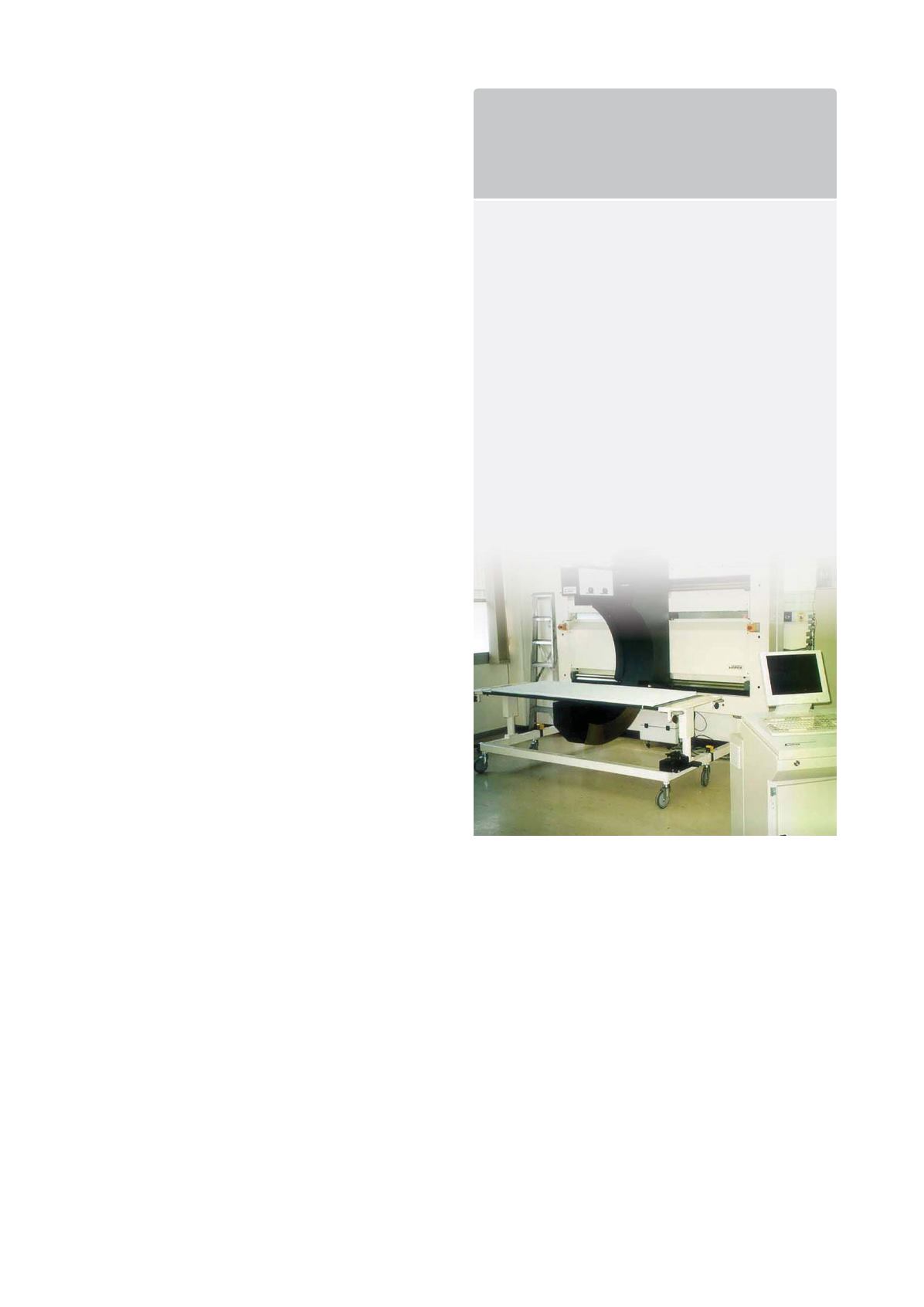

75
Another example is improvements in geophysical
hardware that De Beers Exploration has developed.
These improvements have resulted in the development
of new systems with improved signal-processing
capabilities, substantial reduction of noise, increased
power and more sensitive receivers.
Furthermore, technology is a critical part of reducing
the environmental impact of exploration. The
development of geophysical down-hole logging
tools, for example, will improve the accuracy of
3D modelling, reducing the number of drill holes
required. This not only reduces cost, but also
minimises the effects on local environments.
PRODUCTION
Technology also plays an important role in the
advancement of mining with ever-improving process
efficiencies and novel and unique extraction methods.
De Beers has been at the forefront of many of these
innovations, ranging from process improvements
through the adoption of dense media cyclones to the
exploitation of new resources by the pioneering of
marine mining for offshore deposits.
Technology also enhances the industry by detecting
and deterring diamond theft through improved
surveillance, smart security systems and access
control. In particular, Scannex, a security system
developed by De Beers that allows safe, low-dosage,
full-body x-ray, ensures that diamonds do not leave
with employees exiting the high security areas of the
De Beers operations
53
. This technology has also had
applications outside mining (see Fig. 49).
Additionally, several producers including De Beers
are using strategic laboratory facilities to add value to
production operations by extracting critical data and
information required to target, discover and evaluate
diamond deposits. Such laboratories may comprise in-
house sample treatment, indicator mineral, analytical,
microdiamond and macrodiamond capacity
and capability.
SAFETY
Technology also helps geologists and producers to
manage the safety risks associated with operating in
remote locations. Commercially available technologies
include SMARTY cameras in vehicles to encourage
safe driving, monitor driving behaviour, and enhance
overall safety on the road; rollover protection aimed
at protecting equipment operators and motorists from
injuries caused by vehicle overturns or rollovers; and
smaller, safer drill rigs.
MIDSTREAM OPERATORS
In sorting, valuing and sales, De Beers utilises
proprietary technology to produce consistent
assortments of its diamonds to satisfy the needs
of its customers. In order to achieve this at
economically viable rates, De Beers has developed
and implemented advanced proprietary sorting
technology for weighing and shape/colour/quality
sorting of around 300 million stones that pass
through the business each year. Sophisticated electro-
mechanical feed and dispense mechanisms, and state-
of-the-art image-processing, enable the fastest sorting
machines to operate at up to 15 stones per second.
De Beers’ Scannex technology has been used
in hospitals to scan patients in a rapid and cost-
efficient manner. This technology was first
developed alongside a team from the University
of Cape Town in the 1990s. Following its success,
De Beers formed Lodox Systems (Pty), a separate
company incorporated in South Africa, to produce
the machines.
The Groote Schuur hospital in South Africa was
one of the first in the world to use the scanner.
“About 1,250 patients a year benefit from the
Lodox machines. In the past, time-consuming
multiple images had to be done but the Lodox
saves time so life-saving decisions can be made
more quickly.
54
”
To date, five Lodox machines have been installed,
and orders for a further 12 have been placed
55
.
FIG. 49:
EXTENDING THE
BENEFITS OF TECHNOLOGY
OUTSIDE MINING















